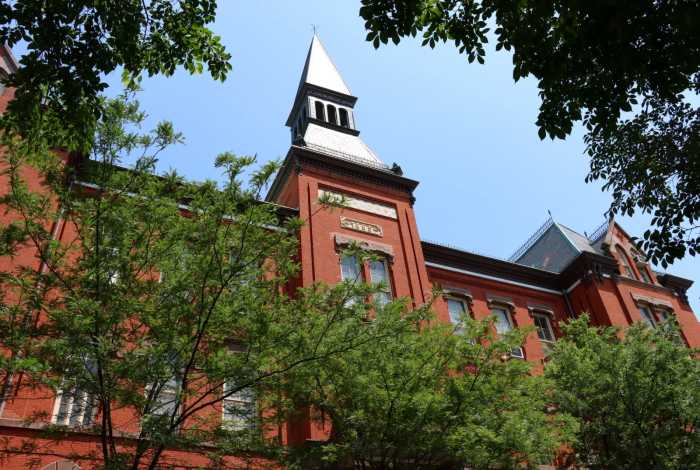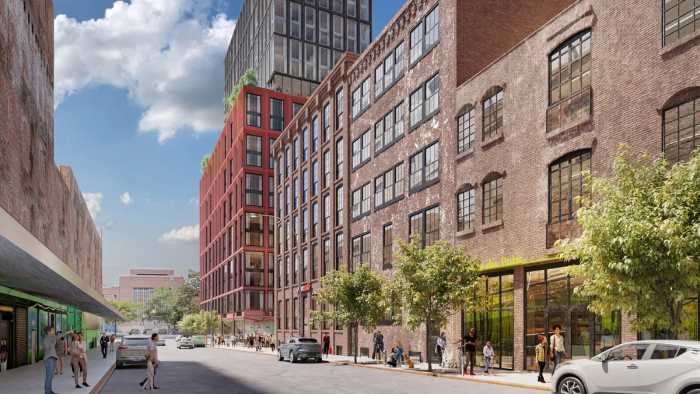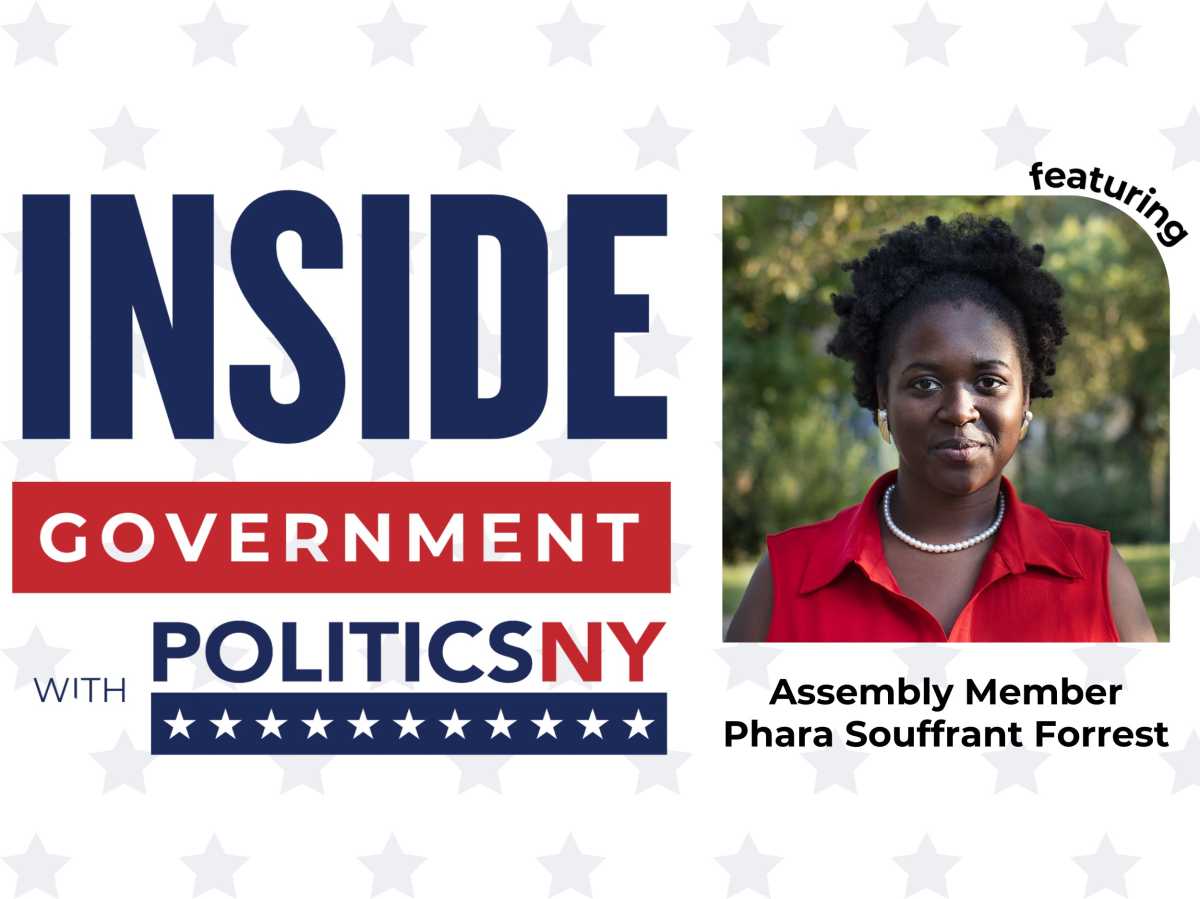The boos of dissenters and jeers of supporters resounded throughout a
packed Downtown Brooklyn auditorium Tuesday night as the state agency
leading developer Bruce Ratner’s proposed Atlantic Yards project
heard testimony in the first of two public hearings on the plan.
A representative from the Empire State Development Corporation (ESDC),
who also acted as a moderator for the often heated and noisy environmental
scoping hearing, listened to five hours of public testimony, and spent
much of that time calling for order from audience members.
The 800-seat auditorium at the New York College of Technology, 285 Jay
St., was for the most part filled, but many attendees mulled around in
the lobby of or talked out front with elected officials and reporters.
Inside, testimony was heated, and a buzzing audience grew rowdy.
Among the elected officials who testified, Brooklyn Heights-Park Slope
Assemblywoman Joan Millman made her first public statement against the
project.
She cited the problems that 18,000 new residents could create for the
borough’s sewer capacity, subway system, police and fire personnel,
and postal service.
“Thus far I have yet to see a detailed and adequate plan that will
address such concerns, and I am not convinced the Environmental Impact
Statement will do so,” she said, while many of the project’s
opponents clapped or whispered a surprised response at the Brownstone
Brooklyn legislator’s position.
She mentioned that her jurisdiction was now inclusive of part of the site’s
boundaries, since the development’s expansion to a fifth site, over
an existing Modell’s sporting goods store and P.C. Richards electronics
store, was within the Park Slope portion of her district.
“While I am not specifically opposed to development along Flatbush
Avenue, I believe it is in excess in light of the already massive construction
planned at the yards,” Millman said.
She also urged for more community input, for Ratner’s Forest City
Ratner Companies to hire a community consultant, and cited her opposition
to the use of eminent domain seizure of private property for the plan.
“The government takeover of private property should be a last resort
and never implemented for private gain,” she said.
“Additionally, if state approval is needed to use eminent domain,
I will not support it, and I will ask my Assembly colleagues, including
Speaker Sheldon Silver, not to support it.”
She finished her tirade, which was booed by the project supporters in
attendance, by saying, “The size and magnitude of the proposed project
is becoming too high a price to pay. Forest City Ratner has prided itself
on being a development corporation that listens to community concerns,
but I have yet to see an adequate plan for solving the potentially harmful
problems that this project will create.”
“Three minutes,” the project’s proponents often yelled
out toward the end of testimony by Millman and other elected officials
who spoke critically of the project, referring to the standard time limit
given to speakers. But they were often shouted down by opponents of the
project, who held up signs that read, “Ratnerville Unmitigatible”
whenever a project supporter spoke.
Many of the Atlantic Yards backers were buildings-trade union leaders
or members of volunteer groups that have signed an agreement with the
developer that will grant them employment or monetary benefits in exchange
for their support.
The project would be dominated by high rise residential towers and office
buildings on superblocks separating Prospect Heights and Fort Greene,
east of the junction of Flatbush and Atlantic avenues. A portion of the
site would house an arena for the New Jersey Nets professional basketball
team owned by Ratner.
After Millman’s testimony, Brooklyn Heights-Park Slope City Councilman
David Yassky offered his support of the development, to a mix of cheers
and boos, adding, “as long as it’s done right.”
“Taxpayers should not subsidize the arena,” Yassky said. “Of
course, the city has a role when it comes to affordable housing, but we
should not be subsidizing the arena project.”
As soon as Councilwoman Letitia James, in whose Prospect Heights district
the project site lies, approached the podium, a project supporter yelled,
“OK, time to go.”
James has been the most vocal elected official opposed to the project
since it was proposed in December 2003.
“These people no longer believe trees should grow in Brooklyn, but
skyscrapers, no matter how vulgar the buildings, how clumsy the design,
how useless the open space,” James said.
Her former employer, Assemblyman Roger Green, meanwhile, spoke about what
he called the “pervasive re-segregation” of Downtown Brooklyn,
which he argued would be righted by the affordable housing component.
“Where appropriate, state and city resources should be applied,”
Green said, to many boos.
The deadline for written public comment to the ESDC is 5 pm on Friday,
Oct. 28. Testimony can be submitted to: Empire State Development Corporation,
633 Third Ave., New York, NY 10017, or e-mailing to atlanticyards@empire.state.ny.us.























